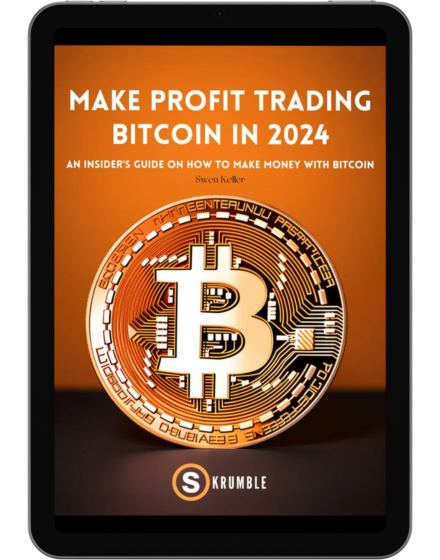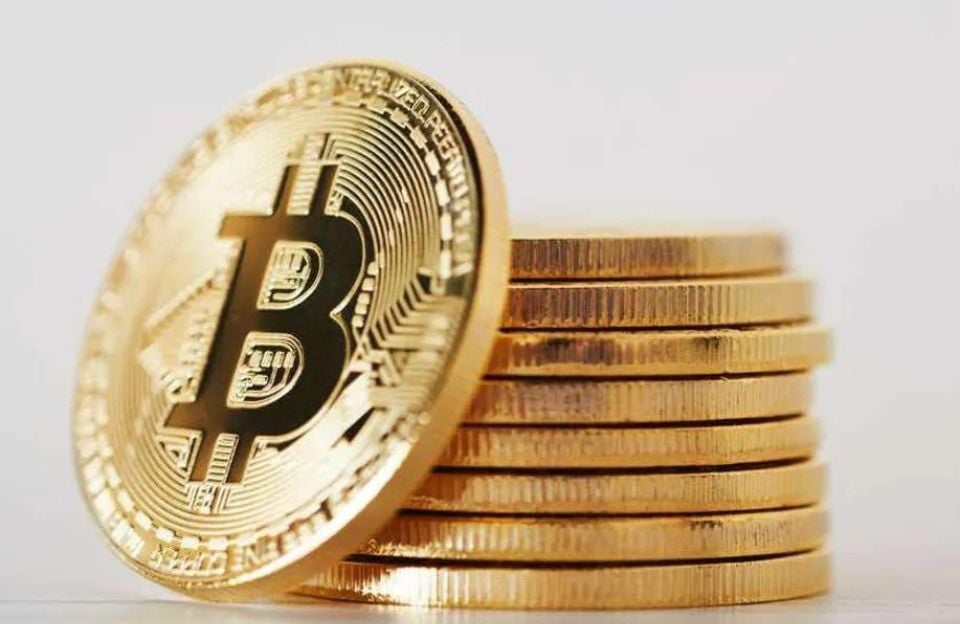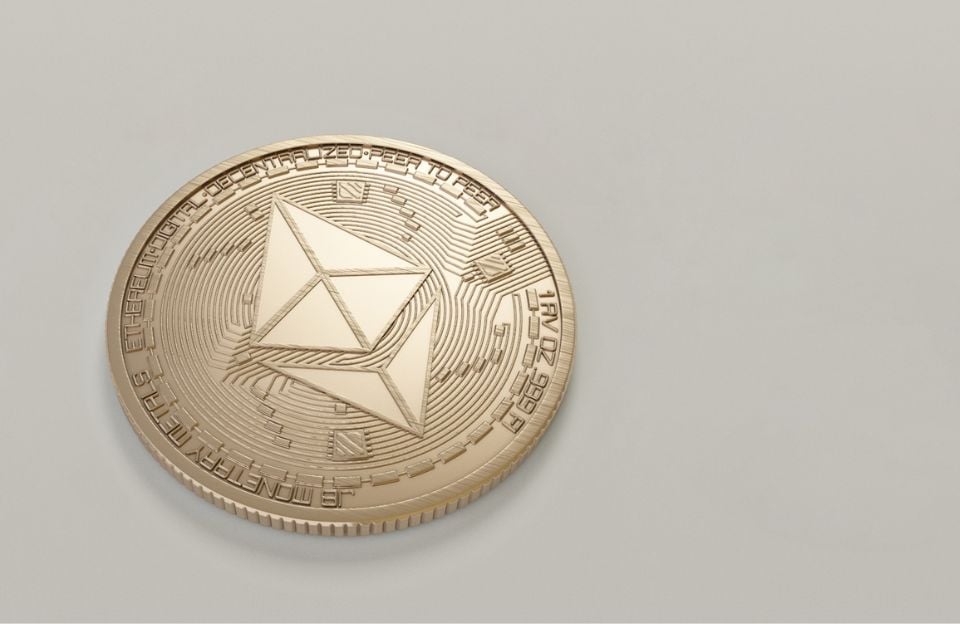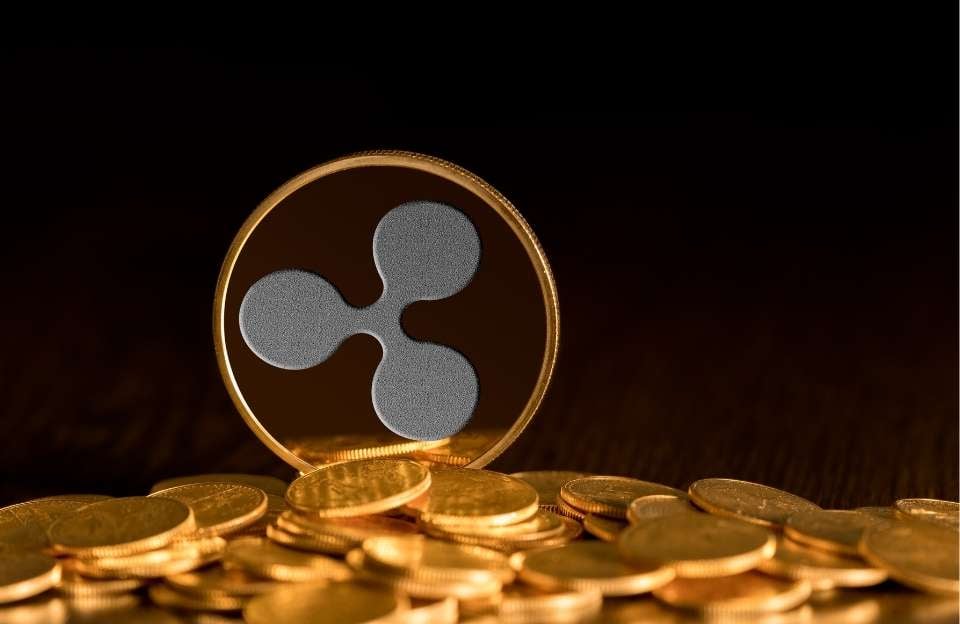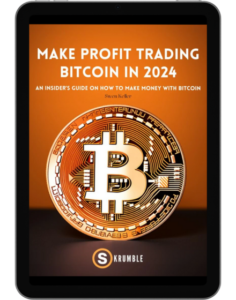Carla Moretti
What is an NFT? Non-Fungible Token Explained
Carla Moretti

What is an NFT?
In the context of blockchain, an NFT can be any digital token that represents a unique asset. Unlike cryptocurrencies, which are fungible tokens that can be exchanged for any other token of the same type, an NFT is not interchangeable.
What Does Non-Fungible Mean?
NFTs have the potential to transform the online gaming industry, real estate, and the art world. Games like CryptoCelebrities, CryptoKitties, and Gods Unchained are pioneering the way for NFTs to be used in gaming and esports. In real estate, for example, NFTs can be used for anything from tokenising properties for fractional ownership to handling rental agreements.
The art world has been slow to adopt blockchain, but there are several NFT projects underway to tokenize art. Real-world applications for an NFT get even more interesting when you consider how they can be used in combination with other technologies. NFTs allow for the creation of what are called “token ecosystems”. This means that you can create a network of tokens or an NFT ecosystem that interact with each other in unique ways, moving between different tokens as needed to complete a given transaction.
The Basics of Non-Fungible Tokens
While all tokens have value, non-fungible tokens are unique in that they have a finite supply. For example, there’s only one Mona Lisa, which makes it a non-fungible asset. Another example of a non-fungible token is a ticket to a concert. Because there are many tickets available, and each ticket is used only once, they are considered non-fungible.
Simply put, fungible means that two units (or many units) of a commodity can be substituted for another identical unit. That is, one unit of the given commodity is as valuable as another unit of the same item. For example, one barrel of crude oil will always be worth the same as any other barrel of crude oil. They are interchangeable, or fungible.
On the other hand, non-fungible assets are units of a commodity that cannot be substituted for another. For example, each original copy of the first edition of Charles Darwin’s ‘On the Origin of Species’ is non-fungible because there are no other copies of that first edition available.
Definition of NFT

A non-fungible token (NFT) is a special type of digital token whose value is unique and specific. This means that each token is unique and not interchangeable with other tokens. While personal finance and financial instruments like equities have different levels of fungibility depending on the nature of the specific security in question, NFTs are not replaceable by another item.
In the context of blockchain, an NFT can be any digital token that represents a unique asset. Unlike cryptocurrencies, which are fungible tokens that can be exchanged for any other token of the same type, an NFT is not interchangeable.
NFTs are generally used as digital representations of real-world assets like physical property, digital art, digital file, or rare collectibles. These tokens can be used to track, verify, and transfer ownership of these digital assets in a tamper-proof way that wasn’t possible before blockchain technology.
At the most basic level, an NFT is a way to represent an asset that has been digitized and put onto a blockchain. This is done by creating one token to represent each item, and then marking that token as non-fungible. Because each token is unique, this method can be used to keep track of inventories and the provenance of valuable digital assets like art or rare collectibles.
How do NFTs work?

NFTs are often based on the Ethereum blockchain, and most smart contracts written for NFTs follow the ERC-721 standard. You can think of this standard as the “Token Bible” that many NFTs use. ERC-721 is the standard behind CryptoKitties, one of the first successful Non-Fungible Token applications.
Like many cryptocurrencies, NFTs have an associated ledger that provides information about transactions and token ownership. The ledger contains information about the specific characteristics of each token, and it is stored on a blockchain. The ledger entry for each token can be viewed by anyone, but the details are encrypted to protect the privacy of the parties involved in the transaction.
How are NFTs Used?
NFTs can be used in several different ways. Some examples include tracking the creation, ownership, and value of limited edition artworks, physical collectibles, and important documents like medical records.
The art world is a prime example of an industry that could greatly benefit from non-fungible tokens. Many artists create limited edition digital artwork and keep track of their creations. However, it can be difficult to keep track of who owns which pieces. The blockchain can help with this by creating a record of ownership for each artwork, which can then be used to track its value and authenticity over time.
NFTs in the Real and Virtual World
NFTs can be applied to a wide range of real-world assets and virtual items. Real-world assets that can be tokenized and represented by an NFT include physical art, collectibles, and even real estate.
Virtual items that can be tokenized include unique pieces of content, such as a song or a poem, physical art, or even a specific level of a video game. The potential applications of NFTs are practically endless. NFTs are often associated with blockchain-based games, as games can employ NFTs to represent items in the game. If an NFT project represents a specific in-game item, that item is always unique. This can be really helpful in stopping cheating and ensuring that every player gets the exact in-game thing they bought.
Why Non-fungible Tokens (NFTs) are Important
One of the most important things about a non-fungible token is that it can represent something that is not a standard financial asset or personal finance. For example, a tokenized rare digital artwork is not something standard in the financial world. With non-fungible tokens, you can represent anything with a token, and you can use that token in any situation where you would like to track ownership, authenticity, or other factors.
While fungible tokens are important, they only have a single purpose: to act as a store of value. Tokens like Bitcoin and Ethereum are fungible and have a fixed supply. They can be exchanged for other tokens of the same type. Non-fungible tokens, on the other hand, are always unique in some way.
Why Should You Care About NFTs?
NFTs have the potential to transform the online gaming industry, real estate, and the art world. Games like CryptoCelebrities, CryptoKitties, and Gods Unchained are pioneering the way for NFTs to be used in gaming and esports. In real estate, for example, NFTs can be used for anything from tokenizing properties for fractional ownership to handling rental agreements.
The art world has been slow to adopt blockchain, but there are several NFT projects underway to tokenize art. Real-world applications for an NFT get even more interesting when you consider how they can be used in combination with other technologies. NFTs allow for the creation of what are called “token ecosystems”. This means that you can create a network of tokens or an NFT ecosystem that interact with each other in unique ways, moving between different tokens as needed to complete a given transaction.
What are Some Examples of Non-fungible Tokens

The idea behind NFTs is not new, but their popularity has increased significantly over the past year. The NFT boom has served as a reminder that utility is more important than hype when it comes to the longevity of a token.
Let’s take a look at three of the most popular NFTs in use today:
- CryptoKitties: One of the very first blockchain games that became a mainstream phenomenon. It’s relatively simple: Players buy and sell unique digital kittens using non-fungible tokens.
- CryptoCelebrities: A blockchain-based card game that lets players collect rare digital trading cards featuring real-world celebrities.
- Gods Unchained: A competitive card game that allows players to collect and use rare cards that represent gods from different mythologies.
Other examples of NFTs include CryptoArt and Rare Art. These offer digital art that is stored on the blockchain via a non-fungible token.
What Types of Use Cases are Non-fungible Tokens (NFT) being Utilized for?
NFTs have so many different uses! They can be used to check if a painting is the real deal, protect the rights of writers, keep health data private, and prevent anyone from tricking others with fake artwork. And the possibilities continue endlessly!
The most notable adoption of NFT is in the art industry. Art provenance is a notoriously difficult issue to solve, and blockchain could provide a solution. Artists can use blockchain platforms to create a unique token that represents a piece of artwork and verifies that it’s authentic.
Who’s Using NFT?
As you’re reading this, many organizations are beginning to experiment with non-fungible tokens. However, it’s still early days for the technology in the digital economy, and there still isn’t a clear path for adoption. The big question on everyone’s mind is: What can we do now with NFT? One of the best ways to get a feel for how NFT can be used is to look at some examples.
- Artsy is the world’s leading online marketplace for art. The company has been using blockchain for years and is now beginning to experiment with non-fungible tokens. Artsy’s platform allows people to buy and sell an NFT project or art online, and they use non-fungible tokens to help keep track of provenance and prove the authenticity of the digital artwork.
- Codex is a decentralized title registry that aims to bring more transparency to art projects and collectibles. The company has partnered with several major museums to create a decentralized registry of art and rare collection, as well as their owners.
- Ocean Protocol is a decentralized data exchange that lets researchers collaborate, publish, and get rewarded for their work. The company has created a digital asset marketplace that lets scientists tokenize their data and put it on the blockchain.
- DADA is a decentralized art gallery that uses blockchain to promote and sell digital art. The platform lets artists use non-fungible tokens to represent their work and keep track of and sell NFTs or copies of their pieces.
Limitations of NFTs
There are a few limitations to keep in mind when it comes to non-fungible tokens. The first is that it may be necessary to integrate a fungible token like Ethereum or EOS with a non-fungible token to get the desired functionality.
Another issue is that the adoption of non-fungible tokens as a standard for any industry is likely many years away. To see wider adoption of NFT, governments would have to change and clarify their stance on cryptocurrency. Businesses would need to be educated on the benefits of blockchain technology and have the technical skills necessary to implement it. Finally, consumers would need to be willing and able to use the technology.
What Challenges Exist for the Adoption of Non-fungible Tokens?
There are a few challenges that may delay or prevent the adoption of non-fungible tokens. These challenges include
- Education: Although the benefits of non-fungible tokens are clear, businesses and individuals are still in the early stages of understanding how they work. There is a lot of misinformation flying around, and it will take some time for the industry to mature.
- Regulation: Governments around the world have varying opinions on blockchain technology. Some have embraced the technology, while others have implemented strict regulations and bans. The path towards acceptance will be a long one, and it will likely be difficult.
- Technical Proficiency: Businesses and individuals must have the technical ability to implement blockchain technology. This likely means hiring experts in the field, which can be costly and time-consuming.
- Consumer Adoption: While businesses can adopt blockchain technology, only a small percentage will do so without any pressure to do so. Consumers need to demand blockchain-based services, and it may take time for them to understand their importance.
How Do You Make Money with NFT?

You can invest in Non-fungible Tokens (NFTs) in several different ways, depending on the specific token and company you’re looking to invest in. In most cases, you’ll be able to buy NFTs on a cryptocurrency exchange.
An NFT is an asset class that is largely unique to the blockchain. However, you’ll have to do some extra research before you can start trading. In general, we recommend keeping an eye on the following factors when researching potential NFT investments:
- Token Type: There are three main types of tokens: fungible, non-fungible, and utility tokens.
- Team: Research the team behind the NFT and make sure they have the experience and resources necessary to succeed.
- Token Distribution: Make sure you know exactly how many tokens are being distributed, how they’re being distributed, and how many of those tokens are available for purchase.
- The Use Case: You’ll want to familiarize yourself with the token’s intended use case. The more specific the use case, the greater the growth potential.
How to Buy NFT?
Most NFTs are purchased via an exchange where you can trade cryptocurrencies like Bitcoin and Ethereum for NFT. However, not all exchanges support NFTs, and not all NFTs are created equal. Before you purchase any specific NFT, we highly recommend doing the following:
- Research the token and make sure it’s legitimate. You can use our NFT investment guide as a starting point for your research.
- Make sure the NFT is listed and supported on the exchange you plan to use.
- Make sure the exchange supports the transfer of funds from a digital wallet or bank account, or if they only support cryptocurrency.
Back in 2021, Beeple’s artwork called Everydays: The First 5000 Days made a huge splash by selling for a jaw-dropping $69.3 million! This sale set a new record, making it the most expensive NFT sale ever seen! Quite an impressive achievement!
How to Store NFT?

When it comes to proofing NFT ownership and storing your NFT, your options are fairly limited. Since NFTs are essentially digital representations of unique assets, they don’t lend themselves to being stored like other digital tokens. Instead, you’ll need to find a secure place to store the information associated with the token, like a token address, name, image, and other details.
Because of these challenges, most investors choose to store their NFTs on the blockchain platform on which they purchased them. Exchanges, however, have a reputation for being less than secure. Luckily, some exchanges are taking steps to improve their security by implementing cold storage or storing a digital asset offline in a hardware wallet or other offline storage device.
Conclusion
Non-fungible Tokens (NFTs) are a way to represent an asset that has been digitized and put onto a blockchain. This is done by creating one token to represent each item, and then marking that token as non-fungible. Because each token is unique, this method can be used to keep track of inventories and the provenance of valuable digital assets. An NFT represents a new way of thinking about blockchain technology and new ways to apply it to everyday life.
The potential applications of NFT are practically endless. There is a lot of excitement around NFTs for both gamers and non-gamers alike, in addition to artists, animators, and fans of pop culture. If you’re interested in the crypto space and want to learn more about NFTs, stay tuned for more upcoming blogs on our website.
FAQ
Most frequent questions and answers
If you want to build a series of NFTs, you may use a collection to do so; on Rarible, you can establish a collection directly from the NFT creation page, to which the NFT digital artwork you are creating will be added. To create an NFT collection on OpenSea, which is one of the most popular NFT marketplaces in the world, for example, click your profile image in the upper right corner, then go to My Collections > Create a collection.
The NFT collection generator makes it simple to create an NFT library. To produce NFT digital artwork, no coding is required. Using the code-free collection generator couldn’t be easier.
The best NFT to purchase will be unique to each individual, whether it’s an innovative movie, snapshot, or new artwork. The greatest NFT digital assets to purchase, in our view, are those with a purpose and a reason, as well as being visually pleasing.
The value of NFT assets is established by the creator, who is accountable for both the supply and demand of the goods and services offered through NFT.
Everydays: The First 5,000 Days. Mike Winkelmann (aka Beeple), a digital artist Beeple sold his work Everydays: The First 5,000 Days in March 2021 for a then-record $69.3 million, making it the priciest NFT ever sold. It’s one of the most expensive pieces of art ever sold as well.
An NFT marketplace is a technology marketplace where you may buy and sell NFT assets and digital art. The largest NFT marketplaces enable users to store and showcase their NFT collections, as well as sell them to others in exchange for Bitcoin or money.
OpenSea is the most popular NFT market, having been launched in 2017, and it is also one of the largest NFT marketplaces operating today. It is home to a variety of popular NFTs, including digital art, music, photography, trading cards, and virtual worlds. To browse NFT collections at Opensea, visit https://opensea.io/.
Non-fungible tokens can act as digital representations of any asset, whether it be something that exists only in the digital realm, such as a work of art, or something that exists in the physical world, like a piece of real estate. Non-fungible tokens (NFTs) can represent a wide variety of assets, including but not limited to, digital and physical collectibles, domains, and event tickets.
One of the deciding criteria in an NFT’s worth is the social proof linked with the NFT projects behind the NFT ecosystem. You can get a sense of how well-liked someone is by looking at their online presence on sites like Twitter and Instagram.
NFTs operate similarly to cryptographic assets and tokens, but they are not fungible because they cannot be traded for one another. So while Bitcoins have the same value, various NFTs may have varying values since they represent distinct underlying digital assets.
Skrumble.com provides all its content for informational purposes only, and this should not be taken as financial advice to buy, trade, or sell any investment instruments or products, including but not limited to cryptocurrencies, or use any specific exchange. Please do not use this website as investment advice, financial advice, or legal advice, and each individual’s needs may vary from that of the author. Investing in financial instruments, including cryptocurrencies, carries a high risk and is not suitable for all investors. It is possible to lose the entire initial investment, so do not invest what you cannot afford to lose. We strongly advise conducting your own research before making any investment decisions. This post includes affiliate links with our partners who may compensate us.
To view our privacy policy read here.

